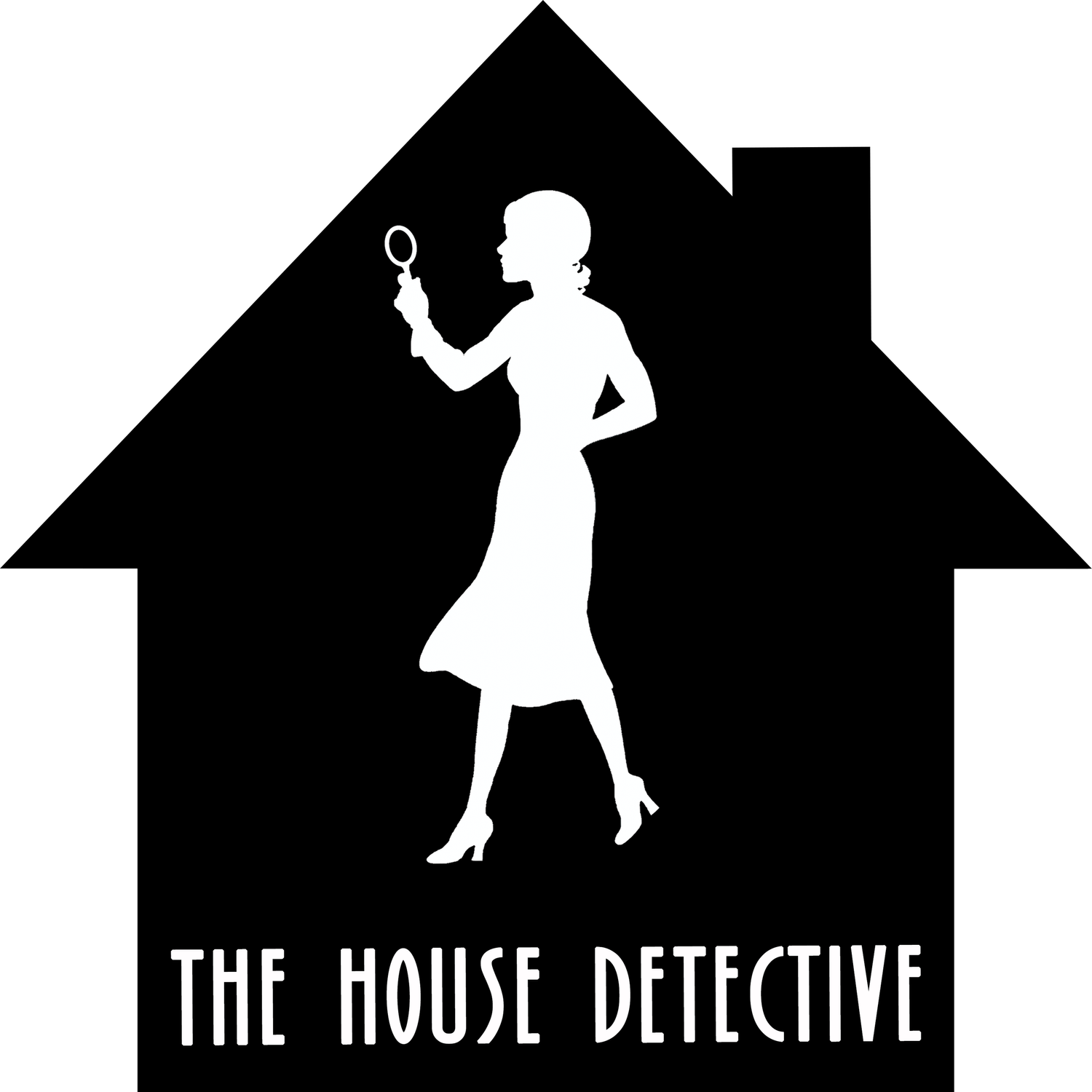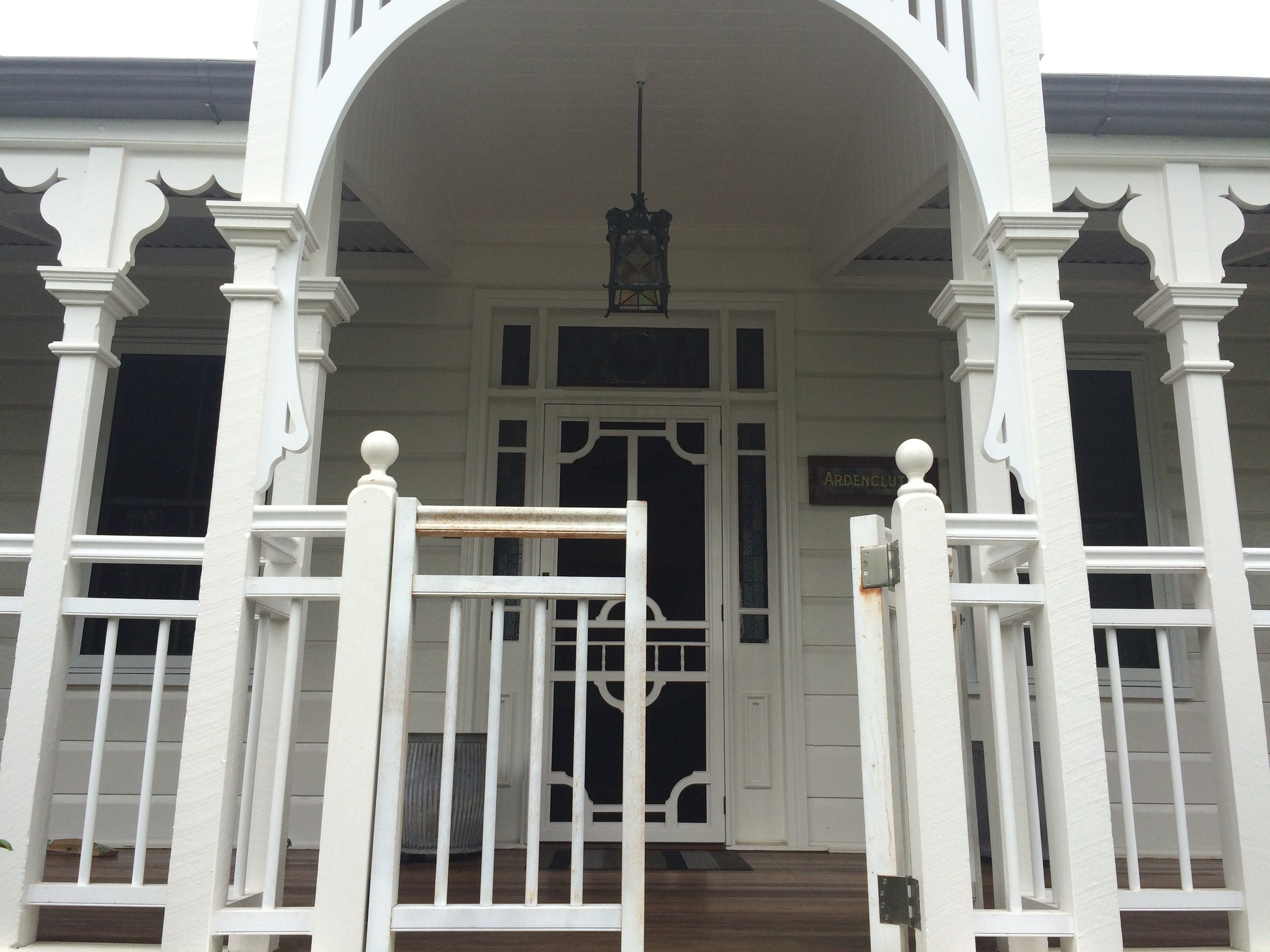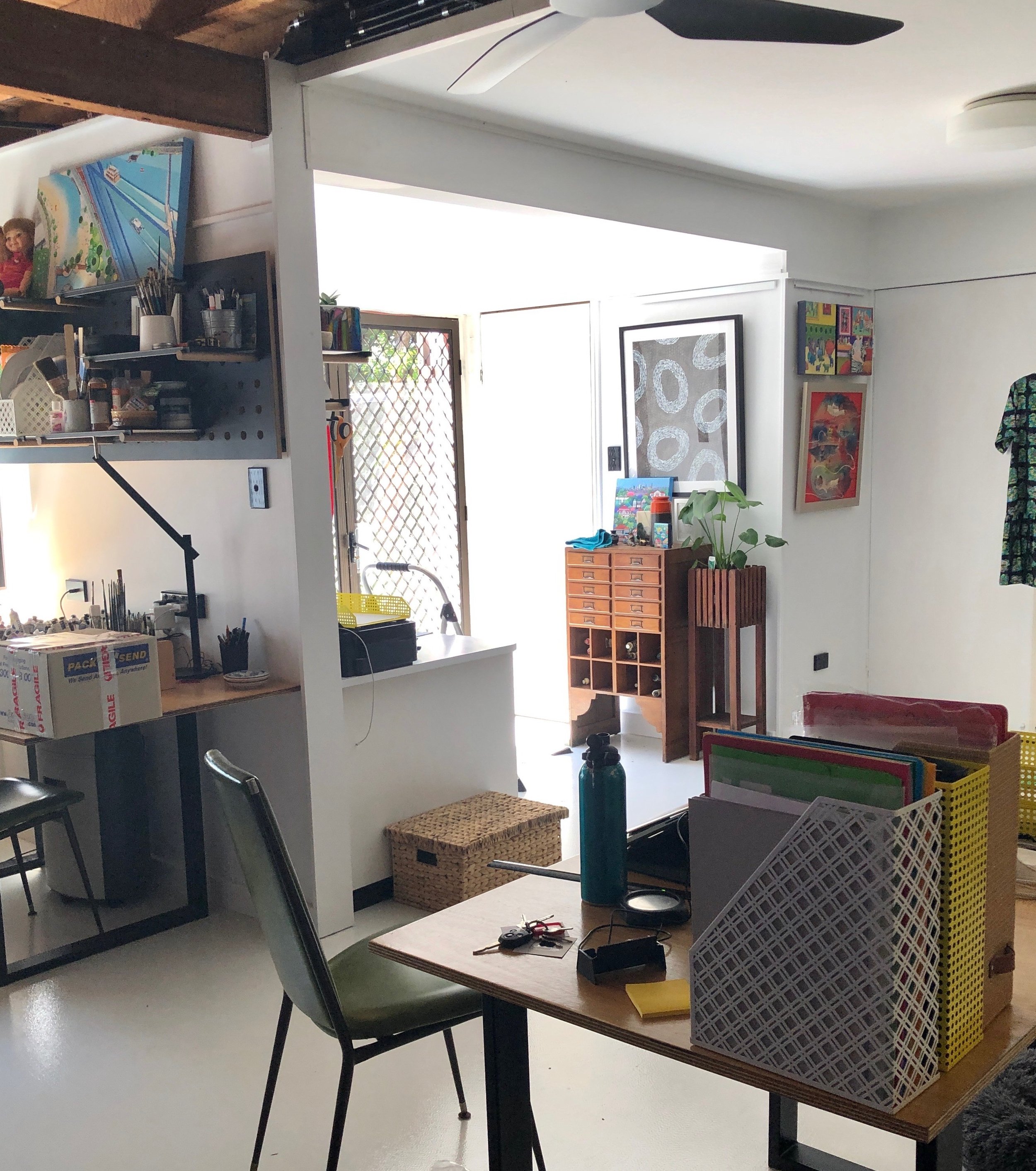ARDENCLUTHA, PADDINGTON
The striking entry to the house
Ardenclutha was built about 1888 by John Vary as a family home. John’s children, grandchildren and great grandchildren all lived there, with the house remaining in the same family for one hundred years. The house has also been home to many families since and has a connection to a well-known Brisbane biscuit manufacturer.
A gentleman with the unfortunate name of Robert Robertson, took advantage of early Crown land sales in Brisbane to purchase Portion 828, Parish of Enoggera, County of Stanley, for four pounds and four shillings, on 15 February 1870. This portion measured 2 acres and 16 perches and was a rectangular shaped, corner block to the south of Ithaca Creek. The road along the southern end of the lot would eventually be named Kennedy Terrace, after Sir Arthur Edward Kennedy, who was the Governor of Queensland from 1877 - 1883. Robertson also appears to have purchased the adjacent Portions 827 and 812.
Originally from Scotland, Robertson arrived in Brisbane in 1866 and quickly found a position as a clerk in the Public Work’s Department. He was subsequently employed as an accountant by the Department of Works and Mines, eventually working his way up through the ranks to the position of Under Secretary in 1891. By this date he is residing at a house named “Esk Mount”, at Ashton St in Toowong. A review of the Queensland Post Office Directories (PODs, an early version of the White Pages) shows that he had lived at Toowong since 1878. Prior to this, Robertson is recorded as living on Herbert St, Brisbane in 1874, but no listing could be found of him at Paddington. This indicates that he never lived on Portions 812, 827 or 828, and suggests that he probably engaged in land speculation and bought the land as an investment.
An 1887 map showing Robertson and Vary's landholdings on what are now Kennedy Tce and Lugg St, Paddington
In September 1877, Robertson sells Portion 828 to John Vary. Vary was born in Hamilton, Scotland around 1846 and like Robertson, he also worked as a clerk after arriving in Brisbane. Also similar to Robertson, Vary owned other allotments close to Portion 828, including Portions 830 to 833. These other allotments all fronted a street running from Kennedy Terrace to Ithaca Creek. This street was originally called Grace Street, but had been renamed School Street by 1905, after the opening of Ithaca Creek State School. Around 1923, it became Lugg Street, named after James Bragg Lugg who resided on Primrose Terrace from 1890 and became a prominent member of the Ithaca Town Council before serving as Mayor for several terms.
An 1895 map of the area, showing Portions 828 and 827, on which Ardenclutha was situated. School Street is now Lugg Street.
After buying Portion 828 from Robertson, Vary did not immediately live there, as from 1885 to 1887, the PODs show him living on the north side of Kennedy Terrace, near Enoggera Terrace. The wedding of his sister-in-law was held at a house called Ardenclutha in 1881, but the newspaper article does not give the street address or name of the owner, only the suburb, Ithaca Creek. Frustratingly, there are no surviving PODs for this year to clarify this and the next one is from 1885. However, since it seems too much of a coincidence for another family to also have a house called Ardenclutha, this suggests there may have been an earlier house of this name, on John’s land at the Enoggera Terrace end of Kennedy Terrace. He is also living in this location in 1887. However, by 1888, John is definitely living at a house named “Ardenclutha”, at the opposite (western) end of Kennedy Terrace. As Portion 828 is the only lot of land John owns on this end of the street, the house has to be situated on this block.
The first mention of a house named Ardenclutha in Brisbane newspapers in 1881
It is not clear why the name Adenclutha was chosen. It does not appear to be the name of a town where the family came from, which was a common source of nomenclature in Brisbane. There is an Ardenclutha Drive in Port Glasgow, Scotland but the Varys do not seem to have lived there. It was also the name of a 1200 ton ship built in 1876, but again, no direct connection could be found with this ship and the Varys, other than the fact that they both came from Glasgow.
Nameplate on the front of the house
The increase in the number of residents on Kennedy Terrace between the 1887 and 1888 PODs, suggests that the street was undergoing development and new houses were being constructed. The 1880s were certainly a period of increased subdivision and estate development in Paddington, as well as all across Brisbane. All of the information I collected would seem to suggest that the Ardenclutha was built sometime between 1887 and 1888. In March 1888, John increases his mortgage on this lot of land by £150 pounds. Combined with the other evidence, it is likely that this money was to fund the construction of a new house. Was John perhaps building a larger home to house his growing family? John and his wife Susan Caldwell, were married on 10 February 1874 at Leichhardt Street, Spring Hill and had subsequently had four children. By 1888, their eldest child, Harriet, was fourteen and their youngest child, John junior, was six, so this seems a possibility.
Queensland Post Office Directory listing for John Vary on Kennedy Tce near Enoggera Tce, in 1887 (Brisbane City Council Archives)
Mortgage stamp on the Certificate of Title for the land, dated March 1888. This may have been to fund the construction of Ardenclutha.
Queensland Post Office Directory listing for John Vary at Ardenclutha in 1887, at the western end of Kennedy Tce, in 1888 (Brisbane City Council Archives)
Despite the land around Paddington and Bardon continuing to be subdivided into small residential allotments and sold as various estates throughout the 1890s, Portion 828 remains intact. Hence Ardenclutha continues to be set on just over two acres of land. It must have made a pretty location for the wedding of the Vary’s daughter, Harriet, on 29 January 1896, when she married another resident of the street, James Kinloch Henderson. Harriet and James then move in with James’ family on the opposite side of Kennedy Terrace.
Although he and his family continue to live at Ardenclutha, John Vary signs the property over to Thomas Morrow in November 1908. This seems a strange thing to do, so perhaps John had gotten into financial difficulty and Thomas stepped in to help out a family member. Thomas was married to John’s wife’s sister and further linking the family trees of the two men, their children were also married to each other. Thomas’ son, William Alexander Morrow, had married John’s daughter, Bertha, on 18 August 1908. Although John Vary was employed as a clerk at this stage, it must have been in a fiscal role, as he is later recorded as being an accountant. This makes the transfer of the land even more curious, as it seems a poor financial decision to give up being a landowner to effectively become Thomas’ tenant.
Thomas Morrow was born in Saintfield, County Down, Ireland, in 1841. He arrived in Queensland in 1863 and just over twenty years later, went into partnership with Mr R. A. Rankin to establish Morrow and Rankin, confectionery manufacturers. The company was a huge success and after gradually acquiring other businesses and entering into biscuit manufacture, in 1900 Thomas Morrow bought out his partner and the firm became Morrows Ltd. Many Brisbane residents still remember the smell of baking biscuits wafting from the Morrows factory on Coronation Drive at Milton.
Morrow's Biscuit Factory on the river at Milton (State Library of Queensland)
Rankin & Morrow's Excelsior Confectionery label (State Library of Queensland)
Morrow's Biscuit Factory at Milton (State Library of Queensland)
Thomas Morrow never resides at Ardenclutha, instead remaining at his residence, “Ruhamah” at Hamilton. John and Susan Vary continue to live at Ardenclutha along with their unmarried sons, John Caldwell Vary and Richard Alexander Vary. On 30 November 1912, Susan Vary passes away and John continues to live at Ardenclutha with his sons. In 1917, Richard enlists in the 25th Battalion, Australian Imperial Force, and travels overseas to fight in the First World War. In 1918 he is wounded in action at France and after a recovering in hospital, he returns home in 1919 after the war ends. Richard joins his father and brother back at Ardenclutha, but after his marriage a year later, moves to New Farm and becomes a fruit grower. Unlike his brother, John Caldwell Vary followed in his father’s footsteps and worked as a clerk. It seems that the Varys entertained at the house regularly and between about 1915 and 1920, John Vary hosted regular tournaments on the large tennis court behind the house. Indeed the Adenclutha Tennis Club competed in events all around Brisbane during this period.
In February 1918, Ardenclutha is transferred to Thomas Morrows’ eldest son, William Alexander Morrow. Just like his father however, William never resides at Ardenclutha, remaining with Bertha at their residence in Hamilton. William was a barrister, but became involved in the family biscuit business later in his career. When Thomas Morrow dies in 1920, William becomes the head of Morrows Ltd. However, William dies the following year, on 1 October 1921. Bertha inherits Ardenclutha at this date, however she remains at Hamilton for a number of years afterwards, whilst John Vary and his youngest son continue to reside at Ardenclutha until John senior dies in August 1922. John junior then stays on at Ardenclutha on his own until around 1925, when Bertha moves back into their childhood home. John, Bertha and presumedly Bertha’s only child, Arthur Caldwell Morrow, then live together at the house until 1928.
By July 1928, the large allotment of land on which Ardenclutha is situated (Portion 828) is subdivided for the first time, into at least six allotments. On 18 July 1928, Subdivision 4, measuring 1 rood and 6 6/10 perches (approx. 1179m2), is transferred to John Caldwell Vary. This may have been in anticipation of building a family home for himself, as just over a month later, on 1 September 1928, he gets married to Dorothy Graham Mowat. John Caldwell builds a house “Oakleigh” on his land. In May 1929, Subdivision 6 is resumed for school purposes, most likely for an extension of the neighbouring Ithaca Creek State School. Ardenclutha remained on Subdivision 5, which, at just over an acre, was more than twice the size of the current parcel.
Newspaper article about the Ardenclutha Tennis Club
William Alexander Morrow (State Library of Queensland)
A description of John Caldwell Vary's marriage to Dorothy Graham Mowat
Bertha dies on 4 February 1937 and Ardenclutha is officially transferred to her son, Arthur Caldwell Morrow, in March 1938. Two months later, Arthur marries Daisy Henderson and the couple continue to live at the house. In 1941, Arthur splits Subdivision 5 into two and the smaller Resubdivision 1, measuring 29.5 perches (approx. 746m2) is sold to William Henry Henderson.
A 1937 sewerage plan of Ardenclutha (Brisbane City Council Archives)
The same 1937 plan overlaid on a current aerial photo of Ardenclutha
Ardenclutha remains on Resubdivision 2 and in the ownership of Arthur and Daisy. The couple are recorded as living there until at least 1963, but were probably still residing there when Arthur dies in 1967. Ardenclutha then passes to Daisy, as Arthur’s widow. Daisy owns it until 1987, when she too passes away and her three children, John Caldwell Morrow, Linley Ann Morrow and Alexander Ewing Morrow inherit the house and land. They hold onto Ardenclutha for just over a year, before selling to Annette Patricia Holland. No relationship between the Morrows and Holland could be found, so it appears that this sale marks the first time in one hundred years that the house passes out of the Vary-Morrow family.
1946 aerial photo showing Ardenclutha and the surrounding area as it looked during the time Arthur and Daisy Morrow lived there (Brisbane City Council Archives)
Ardenclutha remains a charming and historically significant house, retaining many interesting features and the overall character of a Victorian era Queensland home. It has been extended and adapted over the years to incorporate the requirements of its various inhabitants, as well as modern lifestyles in general. The changes have been done in a sympathetic and complementary manner however, matching the style and fabric of the original building. It has been well cared for in the past and remains well looked after, ensuring its ongoing survival. Most importantly for its conservation, it is continuing its journey as a beloved family home.
NOTES
This is only an extract from the full history I uncovered for this house. References citing the sources of the information contained in this report have been omitted from this online version to make it easier to read. Some images and maps have also been cropped to show details more clearly. Please contact me if you would the details of any references, or if you want to know where to find the full size versions of the images and maps.
Want me to uncover the story of YOUR house?
I research the history of houses all over Australia. What secrets will your home have to tell??
View more information on my packages and prices here
Read more about some other houses that I have researched here
Get in touch with me here
You can also follow my research discoveries, history and adventures on Facebook, Instagram and YouTube





















